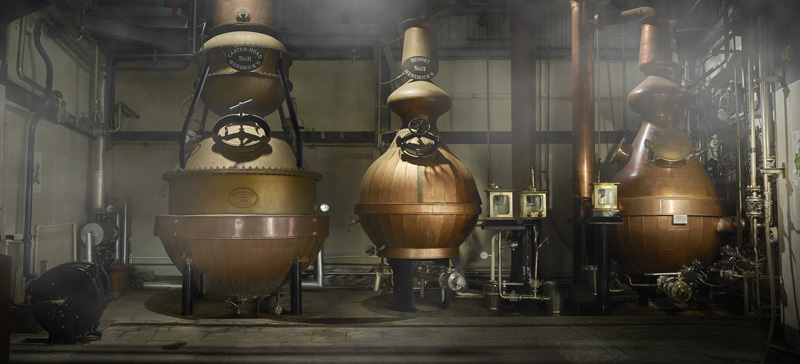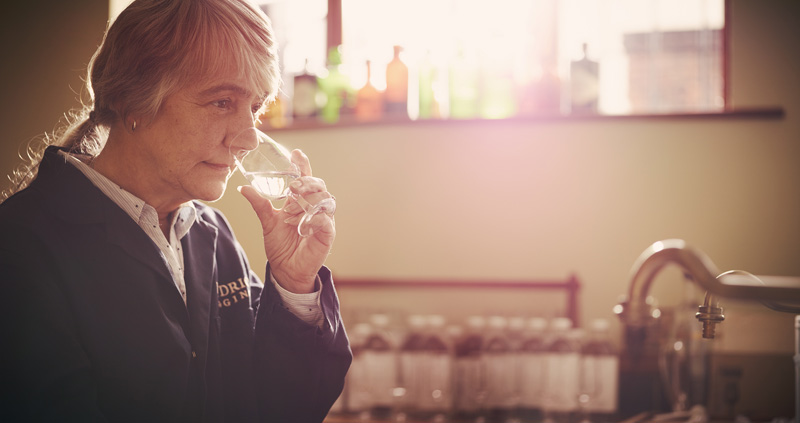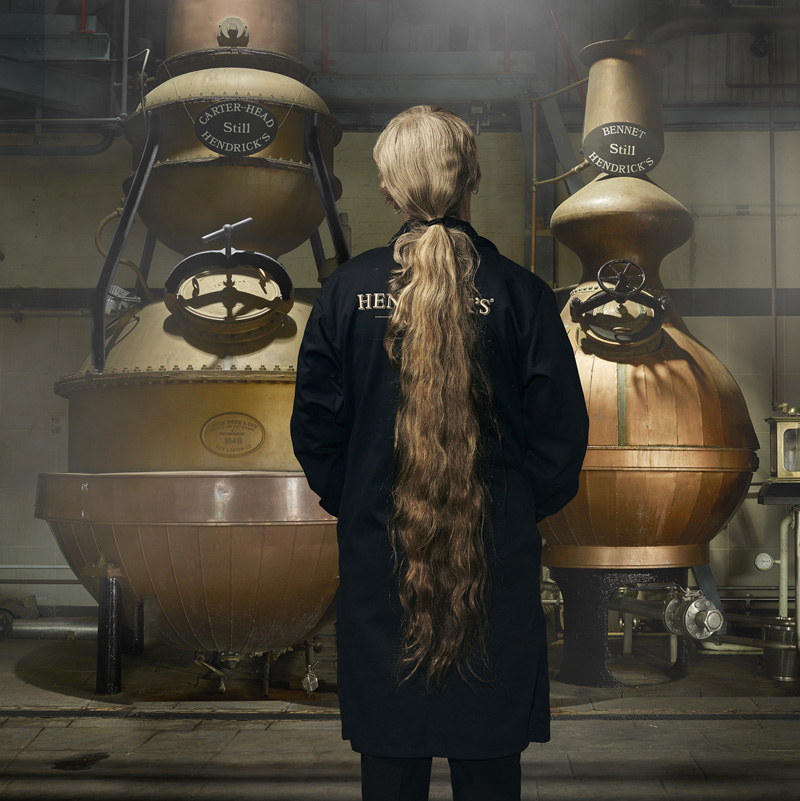
Think making gin is easy? Think again.
It’s not just developing a recipe once and then replicating said recipe ad infinitum — it requires constant vigilance. “People often think that once you have created a recipe that’s it – you can sit back and it’s easily replicated day in day out. I wish it were so!” says Lesley Gracie, Hendrick’s master distiller. Instead, it’s many little things done right, and all about consistency — whether that be in the distillation itself, or, more importantly, in the botanicals they source.
If you want an idea about just how complicated a task distilling gin can be, take a look at our interview with Gracie below.

What is it about your distillation process that is unique to your brand?
Hendrick’s is distilled in two different types of still. We’ve named them after the manufacturer, so we have The Bennett, a 1000L capacity traditional copper pot still from 1860, which boils botanicals in the traditional way and a Carter-head Still – a much taller, more slender still (also 1000L capacity) with rectification plates and a basket into which we place the botanicals. The scarcity of Carter-head stills, and the design, shape and size of our Bennett, combined with the fact we blend their distillates together to a ratio (that’s my secret) all contribute to making the gin quite unique. Both distillates have their own profiles, as determined by the shape of the stills, and the way in which the alcohol has been allowed to interact with the botanicals. The different methods of extraction employed by the different stills bring out quite contrasting notes, but once blended sit together perfectly to reveal something that is both light and complex. Finally, we blend distillates of Rose and Cucumber – and that’s finally when it becomes Hendrick’s!
In 2015 we’ve added a new, exact replica of the Bennett still. It wasn’t easy to replicate such an old still partly due to defunct techniques being used in her production and her odd shape, but after a lot of work the Carrick Still was born, and so it’s now quite a peculiar ensemble of copperware we have in our “gin palace” in Girvan. I plan on taking the Bennett (my baby) with me when I retire, it’ll just fit into my garage, and now we have the Carrick still hopefully it will take them longer to realise whats happened…!
Could you speak to the importance of the botanicals you use? How do you maintain consistency of flavour?
Whilst water, alcohol, our methods and recipe all have their roles to play in maintaining and creating flavour, botanicals, and the oils they impart on the spirit make the gin taste the way it does.
People often think that once you have created a recipe that’s it – you can sit back and it’s easily replicated day in day out. I wish it were so! In actual fact that’s where lots of the hard work starts! We distil in relatively small batches of around 500L-550L per distillation, so if there’s any inconsistency in our botanicals we’ll see it quickly, thankfully it’s uncommon because we work hard to have consistency.
I source our 11 botanicals from all around the world through a couple of botanical brokers. We look for consistency in only two things: chemical make-up and flavour; the specific quality of the flavour from each botanical is the number one priority. Over the years I’ve worked out what moisture and oil content might give us the flavour we’re looking for from things like Juniper and Coriander Seed, but our brokers will send us around 50 samples at the end of each botanical’s growing season that they believe will meet our precise specifications. We will do rigorous test distillations in the lab on them and then order only from those that pass the nosing and tasting. Competition for botanicals is high, and right now there are some very real challenges for the industry globally with certain botanicals. The right quality is hard to come by, but we consider ourselves lucky as we have built strong relationships and can predict our demand. We get first pick of the crop, as it were, and can ride out seasonal fluctuations in supply by working closely with the brokers and sometimes growers early in the process. We can trace all of our botanicals back to origin, but we don’t name the locations publicly as it might alter from season to season if the quality is hard to come by in a certain place but it’s available elsewhere. We might shop around to get the quality we need as that’s the single most important thing for me.
Once our botanicals arrive in Scotland they’re stored, and tested again, with one final test distillation just before use. It’s a huge and very important operation for us, but the more work we do here the less chance there is of supply issues, or us facing the prospect of not being able to source botanicals that aren’t appropriate quality or profile for our gin. Whilst we could in theory (and many do) optimise the recipe to take changes in botanical flavour into account, we’d rather just make sure we’re getting the quality that we want in the first place, so all the work is worthwhile. I spend a lot of my time actually distilling samples in the lab, and nosing samples.
What role does juniper play in your gin? What characters are you looking for from juniper as a botanical?
Obviously, you can’t create a gin without the spirit nosing and tasting predominantly of juniper, and we believe in and uphold this definition. For all the talk of different botanicals in the industry, there should be more that keeps us in common with each other than separates us. Hendrick’s is made from a proprietary recipe, with a “classic” gin base of 5 key botanicals at it’s heart. Juniper is a massive part of that and is the backbone of our recipe. From Juniper, you are looking for the fresh pine, dry and slightly woody aromas and then the other (6) botanicals –the green taste, roots, floral and spice must sit snugly around that, it’s an important detail. Juniper plays more of a role in our gin than people imagine.
We aim to achieve a union of depth, complexity of flavour and a light, refreshing overall effect, and Juniper is a huge part of that overall sensation. I describe the taste of Hendrick’s as a round shape, and Juniper by itself is quite a sharp, angular taste. It’s the structure that everything else hangs from, the outline of the circle, if you will.
We have a specific oil and moisture content we look for in juniper, and the taste of course. What is perfect for us might not be right for another gin, we all have certain notes and levels of certain things we look for. At the moment our juniper is coming from the EU, but not necessarily the traditional juniper regions, as this year and last the quality due to climate and availability due to natural disasters has been.. difficult. It’s these sorts of challenges we have to work with our brokers on.
We find that in tasting Hendrick’s people (bartenders especially) are often looking for the notes of rose and cucumber – but you’ll have to work quite hard to pick out rose and cucumber on the nose. In blind tasting’s people are often surprised that they’ve missed Hendrick’s, but the reason that happens a lot is because at heart, Hendrick’s is a classic gin base with other ingredients built into it, not the other way around.
I hear a lot when I travel from bartenders saying Hendrick’s is light and floral, partly I assume due to our consistent marketing rose and cucumber. I like to challenge people to taste it with me neat, a reappraisal as it were. Often, I witness surprise as there’s a distance between how people remember or assume Hendrick’s tasting and the reality. I’m proud of the liquid!



